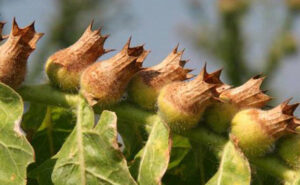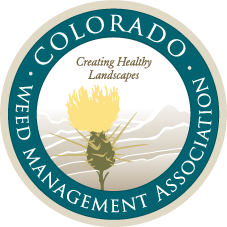Black henbane
Hyoscyamus niger
Centaurea x psammogena
Black henbane is a member of the Solanaceae family, the Nightshade or potato family. This non-native invasive shrubby forb is originally from the Mediterranean region. It contains tropane alkaloids (hyoscyamine and scopolamine). It is poisonous to humans and animals and can be fatal if eaten. Like many other members of this family, all parts are poisonous.
Known in the US since the 1600s, it was first introduced as an ornamental and for its herbal properties. It had been used in Europe for thousands of years as an ingredient in herbal remedies, potions, and as a poison.
Black henbane grows as an annual and in some places as a biennial. It can form dense 6-foot-tall patches. Leaves are about 8 inches long and 6 inches wide. When the leaves fall they form a litter layer that impedes desirable vegetation. Both the leaves and stems have sticky hairs. The plants smell especially bad.
Black henbane flowers during June to September. The flowers form in two rows along racemes growing from the leaf axils. The flowers are ¾ to 1 ¾ inches across, tubular-shaped, cream to light yellow colored with a deep purple throat. The base of the flowers are surrounded by fused sepals forming an urn-shaped calyx which is retained on the stem and surrounds the seed pod. Each plant can form 10,000-500,000 seeds that last in the soil for 5+ years.
Known in Colorado in limited areas, it can be found in hay fields, pastures, rights-of-way, and disturbed sites.
Photo Credits
Seedpods – Robert Vidéki, Doronicum Kft., Bugwood.org
Flower and Patch of Plants – Jan Samanek, Phytosanitary Administration, Bugwood.org
Resources



